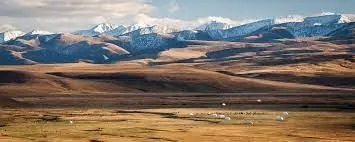Is the Tibetan Climate Crisis Finally Capturing Global Attention at COP30 in Brazil?

Synopsis
Key Takeaways
- Tibet is warming nearly three times faster than the global average.
- The Tibetan Plateau is essential for the water supply of nearly 2 billion people.
- Environmental degradation in Tibet is impacting food security and regional stability.
- Mining activities are harming fragile ecosystems in Tibet.
- Beijing’s water diversion projects pose risks to downstream nations.
Brasilia, Nov 14 (NationPress) - The Stockholm Center for South Asian and Indo-Pacific Affairs (SCSA-IPA), based in Sweden and affiliated with the Institute for Security and Development Policy (ISDP), took part in the 30th session of the Conference of the Parties (COP 30) in Belem, Brazil. This was followed by high-level discussions in Rio de Janeiro to bring attention to one of the planet's most overlooked ecological crises and the increasingly dire climate situation in Tibet and the surrounding Himalayan region.
Leading the delegation was Jagannath Panda, head of SCSA-IPA, accompanied by Richard Ghiasy, Senior Associate Fellow at SCSA-IPA and Director of GeoStrat from The Netherlands. They attended COP30 as observers, aiming to raise consciousness about climate vulnerabilities associated with high-altitude regions. The team underscored that the Tibetan Plateau, known as Asia's 'Third Pole', is facing an ecological collapse that cannot be ignored by global climate governance.
“While COP30's central themes of Amazon preservation, indigenous environmental rights, and sustainable development are critically important, the team noted that the equally significant ecosystem of Tibet is largely absent from international climate discussions. The Tibetan Plateau is warming at a rate nearly three times faster than the global average, resulting in swift glacial retreat, permafrost degradation, and destabilization of significant river systems,” the statement explained.
During discussions with climatologists, indigenous rights experts, and environmental researchers in Belem, Panda stressed that the ramifications of Tibet’s environmental decline extend well beyond the borders of China. The Tibetan Plateau nourishes ten major river systems that support almost 2 billion individuals across South Asia and Southeast Asia. The diminishing ice reserves, changing precipitation patterns, and escalating water scarcity downstream could drastically influence the region's food security, energy strategies, disaster vulnerability, and geopolitical relationships.
As per the statement, the crisis is exacerbated by Beijing’s expanding hydro-infrastructure, including dams and diversion projects along critical transboundary rivers. The newly proposed Medog Water Diversion Project from China stands out as a venture with significant repercussions for downstream nations, potentially disrupting the ecological balance of the Brahmaputra basin and increasing regional tensions.
“Mining activities further complicate the ecological challenges. Increased extraction of lithium, rare earths, copper, and other resources in Tibet has harmed fragile mountain ecosystems and led to soil degradation and habitat loss. Concurrently, the forced relocation of Tibetan nomadic communities has undermined long-established systems of high-altitude environmental stewardship,” the statement concluded.









